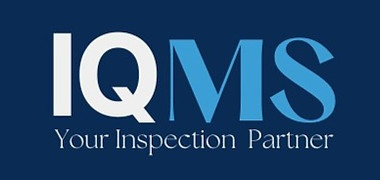Understanding the Importance of Factory Inspections:
Factory inspections stand as pillars of quality assurance, safeguarding products, workers, and consumers alike. They are a critical facet of any manufacturing process, ensuring that goods meet established standards and regulations. The ramifications of overlooking factory inspections can be dire, leading to compromised product quality, legal consequences, and damage to a company’s reputation.
The Role of Factory Inspections in Quality Control:
At the heart of quality control lies the factory inspection process. These inspections provide an impartial evaluation of a factory’s processes, materials, and end products. By identifying defects, inconsistencies, and potential hazards, inspections help manufacturers correct issues before products reach the market. This not only saves costs but also upholds a company’s commitment to delivering excellence.
Ensuring Compliance with Safety Regulations through Inspections:
Safety regulations are non-negotiable in any industry. Factory inspections play a pivotal role in ensuring compliance with these regulations. By assessing workplace conditions, equipment maintenance, and employee safety measures, inspections create a safety net that prevents accidents, injuries, and legal entanglements.
The Factory Inspection Process: A Comprehensive Overview:
The factory inspection process is a multifaceted endeavor that demands systematic execution. It encompasses document review, facility walkthroughs, quality control assessment, and more. This comprehensive approach leaves no stone unturned, providing a holistic understanding of a factory’s operations.
Pre-Inspection Procedures and Requirements:
Prior to an inspection, there are preparatory steps to take. Ensure that all documentation related to quality control, safety protocols, and certifications are in order. Internal audits should be conducted to rectify any potential issues, leaving no room for surprises during the inspection.
What Happens During the Inspection?
The inspection day is a culmination of meticulous preparation. Inspectors will scrutinize documents, tour the facility, assess production processes, and interact with workers. Their goal is to determine whether the factory adheres to regulations, maintains quality, and prioritizes safety.
Post-Inspection: What Comes Next?
Following the inspection, the ball continues to roll. Inspection results are analyzed, and feedback is provided. This phase opens avenues for improvement and growth, enabling companies to make necessary changes for enhanced performance.
Preparing Your Factory for an Inspection:
Effective factory preparation involves several key steps. These include ensuring document readiness, staff training, maintaining a clean and organized facility, and addressing previous concerns raised in past inspections.
Essential Steps for Factory Preparation:
To prepare your factory optimally, begin with a comprehensive review of all documentation, including quality control procedures and certifications. Conduct internal audits to identify and rectify potential issues. Train your staff to respond confidently during the inspection and ensure a clean, organized, and well-maintained facility.
Common Mistakes to Avoid in Factory Inspection Preparation:
Certain pitfalls can hinder effective factory inspection preparation. These include inadequate documentation, insufficient staff training, neglecting facility cleanliness, and failing to address previously raised concerns. Avoiding these mistakes is crucial for a successful inspection.
Dealing with Inspection Results and Feedback:
Inspection results provide invaluable insights. Positive results validate efforts, while areas for improvement signal necessary changes. Constructive feedback is a blueprint for growth, guiding manufacturers toward enhanced processes and better compliance.
Interpreting Inspection Results:
Interpreting inspection results requires a balanced perspective. Celebrate successes and acknowledge areas needing improvement. Each result is a stepping stone toward a more efficient and compliant factory.
Implementing Changes Based on Inspection Feedback:
Feedback isn’t just for analysis—it’s for action. Implementation of suggested changes is where real progress occurs. Adjust processes, retrain staff, and refine operations based on the insights gained.
Tips for a Successful Factory Inspection:
A successful factory inspection begins with thorough preparation. Maintain open communication with inspectors, provide accurate and detailed explanations of processes, and be transparent about your commitment to quality, safety, and compliance.
Best Practices for Factory Inspections:
Adhering to best practices ensures that your factory inspections are effective. Regular internal audits, continuous training, and a culture of proactive compliance create a solid foundation for successful inspections.
Maintaining Compliance Between Inspections:
Factory inspections are not isolated events; they reflect ongoing commitment. Maintain compliance through consistent adherence to safety regulations, quality control measures, and document maintenance. This approach ensures that your factory is always inspection-ready.
As you navigate the intricate landscape of factory inspections, understanding their importance, following best practices, and consistently working toward compliance will establish your factory as a beacon of quality, safety, and excellence in the manufacturing industry.



